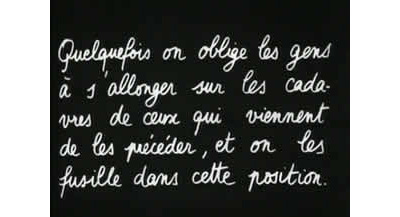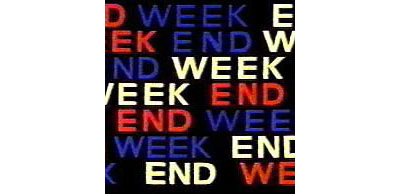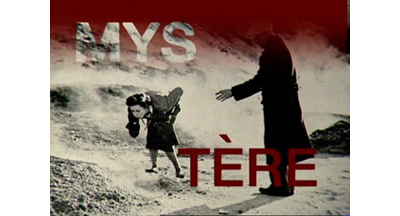Because the film takes place in Mexico translations are certainly needed. As far as subtitles in movies go, there is not much one can say, they are purely utilitarian. White or yellow sans serif (serif if you are unlucky) sentences pop at the bottom of the screen, always interfering with the beautifully framed and considered shot of the director and scurrying away as soon as the non-English speaker has delivered his or her lines. In Man on Fire, Tony Scott turns its obligatory subtitles into visual stimuli for the movie, intertwining — sometimes gently, other times abruptly — typography into its scenes. The subtitles, rendered most of the time in Franklin Gothic, are not confined to the top layer of the film, they have depth and perception, they wait for their turn and they, like their real-life actors, hit their mark as told. This, however, is not groundbreaking, many movies have used typography better and many of the visual puns in Man on Fire are reminiscent of Typography 101 exercises (How do you make type scream? You make it big and bold, silly). Nonetheless, Man on Fire achieves small, visual victories that add charisma and personality to commonly bland and uninspiring subtitles.
The film did not do well: Metacritic lists a score of 47 for it, not even high enough to encourage rentals, it seemed like it was in theaters for no more than a week and, as much as I enjoyed them, critics blasted its subtitles. Brian Gallagher of MovieWeb warns “If you want to know how NOT to do subtitles, this is the movie to watch…”. For The New York Times A. O. Scott starts “[Scott] flashes subtitles across the middle of the screen, in a variety of sizes and type faces [sic], not only translating the Spanish dialogue but also spelling out some choice lines of English as well,” and concludes, “This is mystifying, but also typical of the garish, extravagant literal-mindedness that governs ‘A Man on Fire’”. In an interview with UGO, Scott confided “I thought that subtitles are boring because they’re there generally to serve us with information to make you understand what people are saying in a different language. I just thought they should be kind of a character in the scene. I started to examine and look at another way of doing it, and I stole what I did from old kung fu movies [laughs].”
With all its downfalls — and critics list many if you care to keep digging — Man on Fire is now on my I like it because I just did list. Here are some of the subtitles with — what are these? — overtitles for your convenience:


The subtitles quickly start playing with the pans of the camera, coming up as the scene evolves

In one single scene, the subtitles waltz into the screen, fall in place and then hide behind a bad guy




Famed actor, Giancarlo Giannini, is equally prone to subtitles even when he is speaking in English


It was this scene when I first noticed the subtitles; what looks like a technical error or mistake is a visual reference to the desperation in the actors voices… and, yes, that is Marc Anthony


In one of the must wrenching scenes, the subtitles add plenty of drama

Switching slightly to a faux-italic Chicago for effect… I guess




In another exchange, a pin number is, well, exchanged

And again





When you don’t know who’s the boss, you know you have to make the type uppercase and bigger


An interesting detail, when the old man speaks, a fuzzy halo surrounds the typography


Some other typefaces are used, like Emigre’s Base Nine


And plain old Courier

Some more exchanges in which, you can bet, there is plenty of screaming




And the subtitles were never in the same place



All images are screen shots of the DVD and are property of 20th Century Fox











Armin, I had once heard Tony Scott intended to make a feature film that was only typography. What a possibility...
On Mar.01.2005 at 12:56 AM